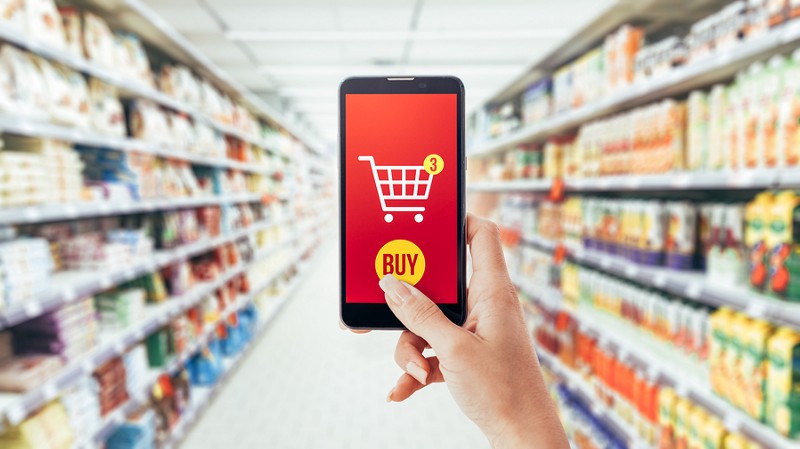Here’s the runway for grocery e-commerce expansion…
A more European-like view of food preferences and shopping is sweeping the retail landscape as consumers shop for meals rather than pantry stock-ups: more trips, more often with smaller baskets aimed at mealtime solutions. The implications of this behavior shift on retail business models and e-commerce strategy is no less than transformational.
Online grocery’s convenience bona fides are already well positioned to capture increased share of stock-up shopping trips, focused primarily on shelf stable packaged foods and beverages.
What’s for Dinner?
However, new insight on consumer food shopping behavior raises a challenge and opportunity that if addressed successfully, could fuel exponential online growth. You need look no further than the decision around ‘what’s for dinner’ — which today is often resolved in a quick grocery store trip a mere few hours before sitting down to eat.
Perhaps most immediately pressing on the potential escalation of grocery e-commerce is the relationship between this shop-for-meal trend and fast order, delivery or click-and-collect fulfillment. Success here could leverage a significant pain point of escalating frustration embedded in the brick and mortar food shopping experience.
Important to note here, Emergent has studied e-commerce extensively and concluded that consumer trust remains a significant near-in barrier to business growth. Shopping online for fresh food online requires consumer belief that e-commerce platforms can be depended upon to select, on the consumer’s behalf, the highest quality fresh perishable items like meat, fish and produce.
An issue of trust
As this trust issue is resolved and consumer confidence takes hold, fresh and perishable sales in e-commerce will rapidly rise, and with it, the economic models of food retail will change forever.
With e-commerce’s historic advantage in online proficiency, industry watchers from Hartman Group have noted: “Amazon’s capital and tech-fueled infrastructure is poised to rapidly expand same-day fill-in shopping of perishable food as trust in the e-commerce portal grows.”
SMALLER BASKETS CREATE GROCERY STORE SHOPPING FRICTION AND AN ECOMMERCE OPPORTUNITY
According to IRI, 64% of grocery visits are now quick, focused, rapid-shopping trips for a limited basket.
Yes, we are witnessing in real time a major behavior change as the distance between buying and consuming collapses.
Traditional food retail was never designed with this kind of meal shopping in mind. Navigating a 60,000 square foot store for five to seven items can become annoying. The smaller the shopping basket, the more egregious and noticeable the time commitment is to travel the store footprint in search of a few items. Younger audiences especially are less tolerant of these time inefficiencies.
So what does it mean when pantry shopping gives way to just-in-time menu procurement? It puts in motion the conditions leading to a potential surge in online food shopping growth. Online can take the cart navigation discomfort out of the shopping experience.
There is however another consideration…
Shop to eat or eat what you shop? E-commerce must align with consumer’s emotional connection to food
First, trust issues around fresh/perishable selection have to be resolved. If e-commerce is to play a substantive role in helping consumers with their dinner plans, more effort is required to recognize and leverage the real passion and care consumers have around fresh food — unlike any other product category offered online.
Virtually every food e-tailer is positioned in similar ways on convenience claims. Therein lies the next challenge: e-commerce constructed to answer transactional simplicity and convenience must not overlook the consumers’ emotion-rich interests around food.
It should be noted that meal kit companies do a much better job in the online environment delivering this kind of information and product backstory via content on ingredient sourcing, food experience and culinary adventure.
So for the most part, the online food environment remains a single instrument playing the song of products, prices and a virtual basket to fill. Unfulfilled as of yet, is the food e-commerce platform offering a complete orchestra and symphony of food story and guidance to home cooks hungering for their next meal adventure.
When e-commerce begins to push past the transactional and into the consumer’s relationship with food, magic could happen as the consumer comes to believe that online food shopping, and a differentiated online banner, offers much more than purchase simplicity.
Editor’s Note: This article first appeared on Medium and is republished here with the author’s permission. If you have interest in Guest Posting, click here.





